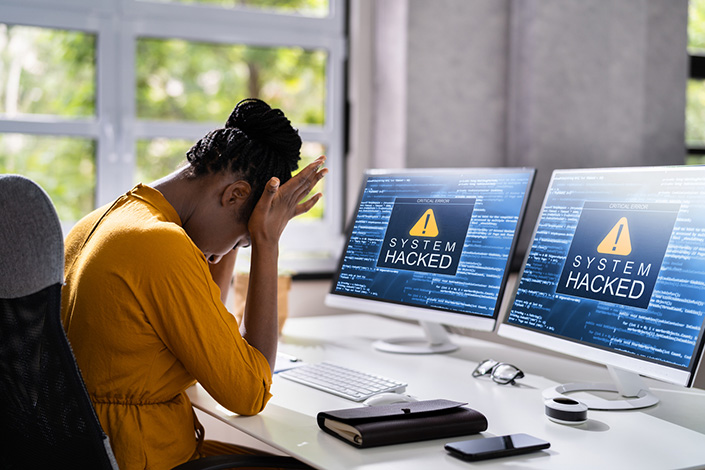Your smart phones, computer systems, desktop computers, laptops, tablets, Wi-Fi routers or other Internet access points, smart homes, and any other smart systems are vulnerable to attack by cybercriminals who aim to steal information, extort money, commit fraud, or simply create havoc. There is insurance coverage available to help, not only financially, but also with information and procedures for these types of losses or damage created by cyberattacks involving data systems or connected home devices.
Forms of Cybercrime
Cybercrime can take many forms, including:
- Personal breaches of data;
- Phishing – attempts to steal money or identity by luring you onto a website that appears legitimate, and asking you to provide personal information, credit card numbers, bank information, or passwords;
- Extortion – obtaining money or other valuables through threats or phony promises;
- Technical support scams – attempts to steal money by convincing you of a serious issue with your computer or mobile device, then persuading you to pay them to fix the fictitious problem; and/or
- Non-delivery or non-payment of goods.
Available Insurance Against Cybercrime
Insurance coverage against cybercrime protects against threats such as:
- Cyberattack
Coverage pays to recover data and restore systems that have been lost or damaged, for example, from an emailed virus that corrupts data and reconfigures your existing computer setup. Restoration costs might involve reformatting the hard disk drive, erasing everything on it, and reinstalling the operating system and all software applications. - Cyber extortion
Coverage pays for ransom and professional assistance in responding to demands based on a credible threat to damage, disable, deny access to, or disseminate content from devices, systems, or data. For example, if you discover that all your computer files have been locked and a ransom note pops up on your screen, demanding money to receive the key to decrypt the files. Even if you were to pay the extortion demand and that resulted in your files being unlocked, you must still pay an expert service to ensure that no viruses remain on your computer. - Online fraud
Coverage pays for direct financial loss in the event of technology-related fraud. For example, if you were to receive an emotional email from someone who claimed to be a close relative or friend in trouble and who needed money, and you were unable to verify the story, but didn’t want your friend or relative to suffer, and therefore, you sent the money, only to find out later, the whole story was a lie. - Data breach
Coverage notifies and pays for services should third-party private personal data entrusted to you is stolen or otherwise breached. For example, if you are a volunteer who maintains important information about an organization’s membership on your personal device, you leave that device on the bus transporting the group to an event, and when you return to the bus, the device has been stolen, cybercrime insurance would cover your costs to notify the affected members and provide them with fraud alert services. Another example: a stranger offers to take your photo, so you hand over your phone and the stranger runs off with your phone and within minutes, changes your password and steals all your data, including all your family’s and friends’ contact information.
Reminders About Your Vehicle Insurance
Don’t forget that:
- Anyone who drives your vehicle must be listed on your insurance policy before you allow them to operate your vehicle. If a driver who is not listed on your insurance is involved in an accident while driving your vehicle, you may not be covered for a claim.
- Vehicle insurance has a maximum amount payable for income replacement if you are unable to work due to a claim. The good news is that extra coverage is available, but must be purchased before the claim occurs.
For more information about any of the above insurance items, or to purchase these types of insurance, or for any other insurance needs, please contact your Murrick Group insurance agent.
Written by Mark Hall




